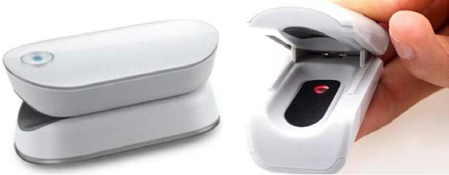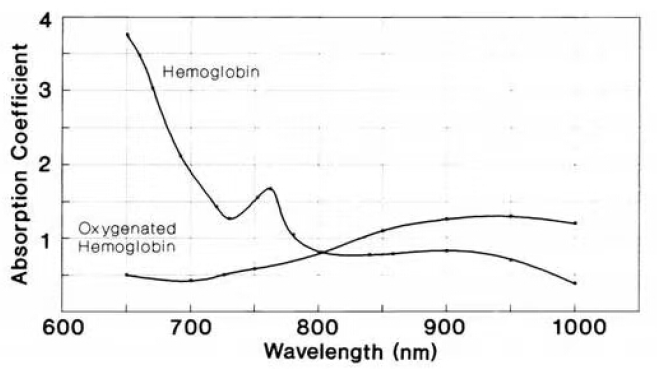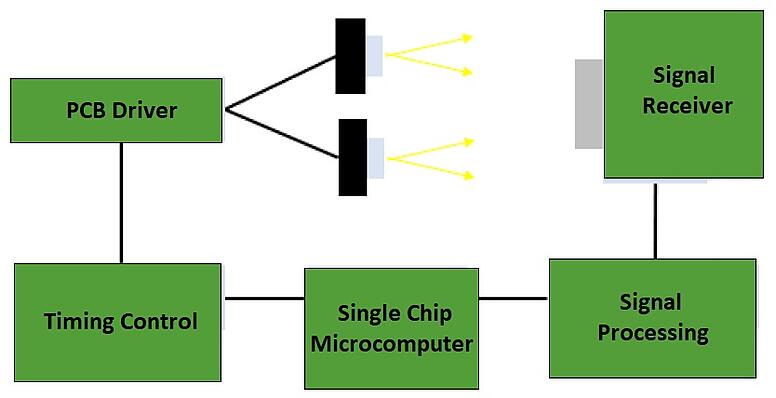
Despite the recent economic depression caused by the COVID-19 pandemic, the medical industry has seen continued growth. Among the new industry opportunities, demand for medical devices has spiked. In this article, we’ll discuss one device in particular, the pulse oximeter, and the role VCSELs play in enhancing these devices to further support the medical industry and the fight against COVID-19.
 A pulse oximeter can estimate the saturation of oxygen in your blood. “A drop in blood oxygen saturation” is a common phenomenon in COVID patients. So, pulse oximeters can be easily employed to reflect an important physiological parameter of respiratory and circulatory functions. In routine health monitoring, an oximeter can screen patients with anemia, monitor patients’ blood loss in surgery, guide clinical blood transfusion management, monitor heart rate, and assist in other pulse diagnoses.
A pulse oximeter can estimate the saturation of oxygen in your blood. “A drop in blood oxygen saturation” is a common phenomenon in COVID patients. So, pulse oximeters can be easily employed to reflect an important physiological parameter of respiratory and circulatory functions. In routine health monitoring, an oximeter can screen patients with anemia, monitor patients’ blood loss in surgery, guide clinical blood transfusion management, monitor heart rate, and assist in other pulse diagnoses.
The pulse oximeter uses the absorption rate of two different wavelengths to calculate the blood’s oxygenation. The correlation of the signal to the heart’s pulse is used to separate the arterial blood’s signal from venous and capillary blood, as it’s well known that the volume in the blood vessels will vary during a pulse beat. Furthermore, for different light wavelengths, the absorption coefficients of reduced hemoglobin (Hb) and oxyhemoglobin (HbO2) are different. As shown in the figure below, in the 850nm and 940nm infrared light bands, the difference in light absorption between hemoglobin and oxyhemoglobin is significant.

The ratio between the two wavelength measurements is then calculated by the processor, which represents the ratio of oxygenated hemoglobin (Hb) to deoxygenated hemoglobin HbO2, and this ratio is then converted to SpO2 by the processor via a lookup table based on the Beer-Lambert law.

・The PCB circuit drives the VCSEL to emit infrared light
・Hb and HbO2 absorb IR light of different intensities
・Remaining IR light is collected by signal receiver
・Processor processes the electrical signal
・converts it into blood Oxygen index.
Brightlaser is committed to the development and production of VCSELs, providing 850/940nm VCSEL light sources to help meet the increased demand for high-quality pulse oximeters in the fight against COVID-19. Brightlaser also provides PIN diode/Photodiode receiving pairs. They offer various wavelengths (850nm/940nm, etc.) and power options for their VCSELs, used as the core light emission source of pulse oximeters.
Compared to LEDs, VCSEL light sources enable more accurate measurements for oximetry applications, penetrating deeper into the skin. VCSELs provide the benefits of a narrower spectral linewidth emission, a 4X smaller shift in wavelength with temperature, and as much as an order of magnitude reduction in power consumption. The latter consideration is particularly relevant, considering the change to wireless sensors for patient convenience or home monitoring of patients with telemetric medicine.
Additionally, BrightLaser offers 808nm VCSEL devices, which are somewhat of a rarity!
出典:
http://bit.do/fMqgh
この情報へのアクセスはメンバーに限定されています。ログインしてください。メンバー登録は下記リンクをクリックしてください。

